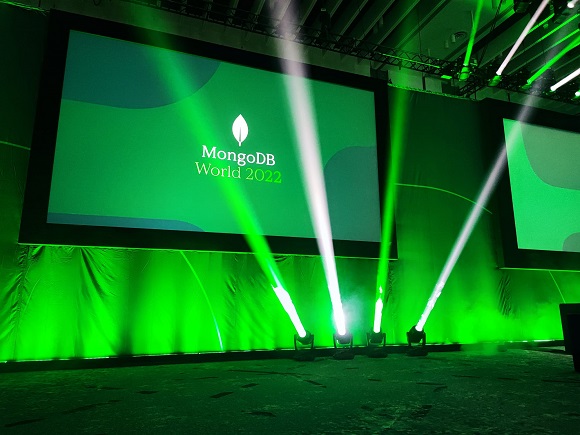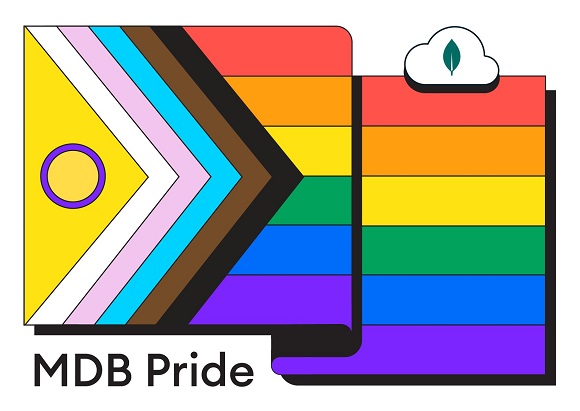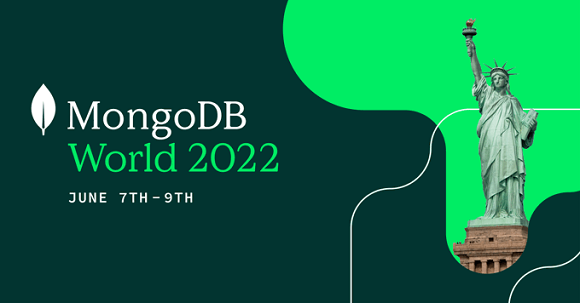MongoDB World 2022 live show reports: Day #1 - developer productivity
The Computer Weekly Developer Network & Open Source Insider blog team attended MongoDB World 2022 in New York City this June to file a series of show reports, keynote download sessions, comments from the show-floor’s ‘partner promenade’ and various other morsels all drawn from the event itself.
This is a report drawn from day #1 of the conference, which was staged both virtually and In Real Life (IRL) for attendees around the world.
Keynote kick-0ff.
This year’s opening keynote ‘The Future Runs on MongoDB’ was delivered by Dev Ittycheria, MongoDB CEO and Sahir Azam, MongoDB chief product officer.
Reflecting on the effects of the pandemic, Ittycheria proudly claimed that many developers had seized the opportunity to use the MongoDB platform to build applications and services rapidly throughout these last two and a half years in particular – but why?
Developer productivity
Two words, he said – developer productivity.
“Everything we do is all about removing friction and increasing developer productivity. In the 8-years I have been CEO of this company, customers have told me many things… but no customer has ever complained about innovating too quickly. Legacy architectures with brittle and inflexible characteristics are what have held people back,” said Ittycheria.
Thinking about the document model that underpins MongoDB, Ittycheria pointed to the 265 million downloads that MongoDB has seen throughout its history.
Ittycheria said that Atlas is the fastest-growing piece of the organisation’s business… and this event was designed to showcase many of the key new developments.
“Atlas is the most widely available cloud data service on the planet – and we have built deep integrations with AWS, Microsoft Azure and Google Cloud,” said Ittycheria.
Use case usefulness
With customers in every conceivable industry vertical, Ittycheria used his keynote to highlight work carried out with UK chemist Boots – the company built its digital service created during the start of the pandemic using MongoDB. Looking wider, Verizon is using MongoDB to drive data closer to the edge and deliver the next phase of applications using 5G.
After a session delivered by speakers from US bank Wells Fargo, CEO Ittycheria reflected on the US$1 billion his firm has invested in R&D thus far. Thinking about where MongoDB fits into the database market, he said that relational database are just too inflexible – equally, although niche databases have sprung up to serve specific needs, this (claims Ittycheria) creates an overlay complex architecture.
Where MongoDB sits is a place with support for operational to transactions to analytics use cases.., serving more of the data lifecycle, which is why the company talks about its technology proposition today as a ‘developer data platform’.
Product strategy & tactics
The keynote gave way to Sahir Azam chief product officer and his session. Discussing MongoDB’s underpinning technology strategy behind Atlas, Azam was upbeat on its multi-cloud resilience.
“Modern development today is all about the constant search for increasing levels of abstraction,” said Azam. This is all connected to key technologies like containers and serverless i.e. all those things that take away a lot of infrastructure mechanics involved with running always-on applications today.
Severless fundamentals
Minimal configuration, seamless scaling and usage-based pricing should be severless fundamentals said Azam – and these, therefore, are key characteristics of MongoDB Atlas.
Organisations today need to be able to scale down to minimal usage and scale up when needed. Organisations also need to be able to control costs for scenarios (such as) when an application spikes, where costs can really shoot up – a scenario that MongoDB has addressed with its approach to discounting when certain events happen.
No log-jams
Atlas gives data developer teams the complete freedom to move between serverless or dedicated without experiencing log-jams said Azam. Now that Atlas Serverless is officially available, the company is looking at charts and visualisation functions that are now being expanded across the platform itself.
“Atlas Serverless is now generally available and allows users to support a wide range of application requirements with little to no initial configuration and ongoing capacity management. Users benefit from the ability to scale to zero and deploy in all three major cloud providers, and tiered pricing automatically reduces the cost for large workloads without upfront commitments,” noted the company, in a press statement.
MongoDB execs also highlighted new Vercel integration, which will allow teams using Vercel’s platform to develop, preview and ship websites and applications to more easily get started with MongoDB Atlas as their backend database.
According to Webo Digital, “Vercel (formerly ZEIT) helps front-end teams work faster and more efficiently by combining the best development practices with a specialised focus on end-user performance. Vercel speeds up the process of creating, testing, and deploying web pages by compiling all of the necessary code into a single file. In turn, it makes tracking changes, debugging errors, and ensuring consistent style across pages easier.”
Using Vercel’s Integrations Marketplace, developers can now deploy new web experiences on Atlas with zero configuration and instantly start building with documents that map directly to their code.
For a day #1 keynote, MongoDB World 2022 was developer-centric from the start and the entire session was designed to showcase where the total platform – with MongoDB Atlas developments at the centre – is growing.
MongoDB Tweets at this link and the event hashtag is #MDBW22.


MongoDB champions inclusion, diversity, equity, and accessibility (IDEA). It also aims to amplify historically marginalised voices as well as provide accessibility accommodations to MongoDB World 2022 attendees.




